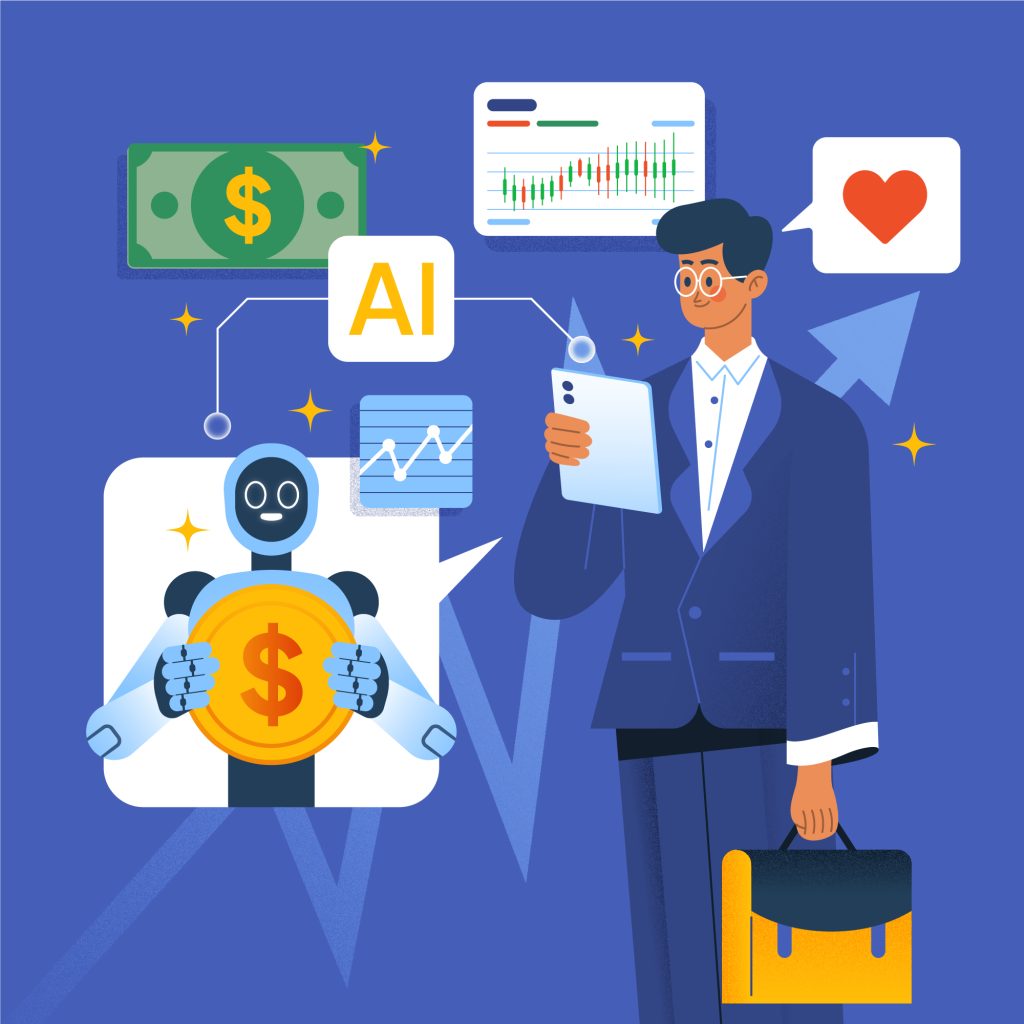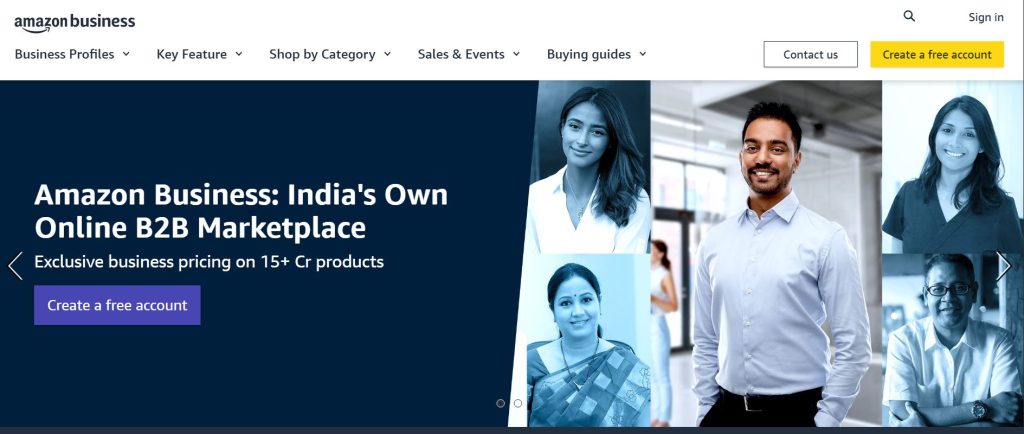Introduction
B2B marketplaces have evolved far beyond being mere platforms that connect buyers and sellers. They have become ecosystems where data flows continuously across touchpoints — from product discovery to purchase, fulfillment, and post-sale feedback. Harnessing this data effectively with AI not only enhances user experience but also opens the door to monetization models that can significantly boost profitability.
How AI monetizes insights in B2B marketplaces?
1. The Hidden Goldmine in B2B Marketplace Data
Every B2B marketplace naturally generates massive amounts of structured and unstructured data. This includes buyer behavior data, such as search terms, purchase frequency, and browsing patterns, as well as supplier data, including performance ratings, pricing models, and delivery consistency. Transactional data — such as payment cycles, order volumes, and category-specific demand — adds another layer of intelligence that reflects the economic heartbeat of the platform.

2. How AI Turns Data into Actionable Insights
AI acts as a catalyst that transforms raw Sharetribe marketplace data into meaningful, actionable insights. Through machine learning, pattern recognition, and predictive algorithms, AI uncovers relationships within datasets that would be nearly impossible for humans to detect manually.
For instance, predictive analytics can identify demand fluctuations across product categories, allowing suppliers to anticipate market changes before they happen. Recommendation engines personalize buyer experiences by suggesting relevant products or suppliers based on user intent and historical behavior. Similarly, smart pricing models powered by AI can automatically adjust prices in real-time by analyzing competitive trends, supply-demand ratios, and buyer interest.

3. Turning Insights into Revenue Streams
The most successful B2B marketplaces go beyond using AI insights for internal optimization — they monetize them directly. Turning data into a product can create new, recurring revenue channels that scale alongside platform growth.
a. Data-as-a-Service (DaaS)
Marketplaces can anonymize and aggregate their transactional data into valuable intelligence products and sell them as subscription-based services. For instance, a manufacturing marketplace could offer monthly reports showing price trends of raw materials or procurement volumes by region.
-
On average, DaaS models can generate 10–20% of a platform’s total annual revenue.
-
Businesses pay $2,000–$10,000 per year for access to industry-specific data feeds.
-
According to IDC, the DaaS market is projected to reach $66 billion by 2030, reflecting strong demand for real-time industry data.
These insights empower businesses to make faster, evidence-based decisions while providing the marketplace with a stable, predictable income stream.
b. Predictive Market Reports
Using AI-driven forecasting, marketplaces can create premium dashboards that deliver forward-looking analytics. For example, suppliers could subscribe to forecasts on emerging product categories or regional demand surges.
-
Predictive analytics can improve demand forecasting accuracy by up to 85% (McKinsey).
-
Marketplaces offering predictive insights often see 25–30% higher retention among suppliers.
-
Subscription fees for predictive dashboards typically range from $99 to $499 per month, depending on the data depth.
These reports position the marketplace as a trusted industry authority while generating consistent, scalable subscription revenue.
c. Supplier Intelligence Tools
Suppliers constantly seek visibility into how they perform compared to competitors. AI-powered dashboards can display listing engagement, conversion rates, search performance, and buyer demographics — all available through tiered membership plans.
Marketplaces introducing AI analytics tools see a 40% increase in supplier engagement.
Premium analytics tiers can raise average revenue per supplier by 15–20%.
Example: A marketplace charging $49/month for basic analytics and $199/month for advanced intelligence can turn data into a steady profit center.
These tools both monetize insights and enhance supplier satisfaction, strengthening retention.
d. Targeted Advertising and Product Placement
AI enables micro-targeted advertising ecosystems where buyers are segmented by industry, purchase behavior, and intent. Platforms can then sell sponsored listings or featured product placements that deliver measurable ROI for advertisers.
Targeted ads convert 2.8x better than untargeted ones (Statista).
Advertising revenue can represent 25–40% of a mature B2B marketplace’s total income.
Example: ThomasNet’s AI-powered targeting system increased advertiser ROI by 60% year-over-year.
With AI precision, marketplaces turn engagement data into direct, high-margin advertising revenue.

e. Smart Recommendations for Upselling
AI-driven recommendation engines suggest complementary products or services based on buyer behavior and order history. These features not only improve the buyer experience but also increase average order value (AOV).
AI recommendations can boost AOV by 20–35% and sales conversions by 25%.
Platforms can charge suppliers a 5–10% commission on upsold bundles.
Example: Amazon Business attributes over 35% of its sales to AI recommendation systems.
This approach creates a win-win — more revenue for the marketplace and higher visibility for suppliers.
f. Partner Integrations
Marketplaces can share AI-driven insights with external partners like logistics companies, CRM platforms, or payment providers through APIs or data-sharing agreements.
Strategic data partnerships can generate affiliate or referral revenue in the range of 5–15% per transaction.
AI-integrated logistics data can reduce fulfillment costs by up to 20%, benefiting all ecosystem players.
Example: Integrations with CRMs like HubSpot or Salesforce can create new co-marketing and revenue-sharing opportunities.
By extending AI insights beyond the platform, marketplaces create interconnected ecosystems that drive long-term growth and monetization.
4. Ethical and Regulatory Considerations
As data monetization becomes more widespread, it is critical for marketplaces to adopt an ethical and compliant approach. Data privacy and user trust are non-negotiable pillars of long-term success.

Every data monetization initiative should begin with anonymization — removing any personally identifiable information before analysis or sharing. Transparency is equally important; users must be informed about how their data will be used and given clear options to opt in or out. Robust data security measures, including encryption and access control, are essential to maintain trust and protect the marketplace’s reputation.
Furthermore, the concept of fair value exchange should guide data monetization. When users see tangible benefits from their data — such as performance insights, benchmarks, or marketplace improvements — they are more likely to remain loyal and contribute to the platform’s data ecosystem.
5. Implementing AI-Driven Monetization in Your Marketplace
The journey from raw data to monetized insights doesn’t happen overnight. It begins with establishing a strong foundation. The first step is to audit your existing data ecosystem to understand what types of data you have, how clean it is, and what value it could generate.
Next, invest in data infrastructure — data warehouses or cloud-based analytics tools that centralize and organize information from all marketplace touchpoints. Once the foundation is ready, start with AI models that drive immediate business impact, such as recommendation systems or dynamic pricing tools.

As your data matures, build premium analytics tiers that allow businesses to access advanced insights on a subscription basis. Finally, embrace continuous iteration — use A/B testing, feedback loops, and performance tracking to improve the accuracy and usability of your AI-driven insights. The key is to move strategically, focusing on quick wins that demonstrate ROI early in the process.
6. Real-World Examples of AI Data Monetization
Artificial Intelligence has already proven its potential to transform raw marketplace data into profitable insights across the global B2B ecosystem. Several leading platforms have implemented AI in highly strategic ways — not only improving operational efficiency but also creating entirely new lines of revenue through data-driven services. Let’s take a closer look at how some of the world’s most successful B2B marketplaces are monetizing data through AI innovation.
Alibaba’s Predictive Intelligence: Turning Data into Supplier Advantage
Alibaba’s B2B marketplace is one of the most advanced examples of data monetization at scale. With millions of buyers and suppliers transacting daily, the platform gathers an enormous amount of behavioral and transactional data. Rather than letting this data remain static, Alibaba leverages AI and machine learning algorithms to interpret it in real time.
Through these algorithms, the platform identifies buying trends, regional demand fluctuations, and emerging product categories. Suppliers can then access predictive insights that forecast what products will be in demand and when — enabling them to optimize inventory, production schedules, and pricing strategies.

These predictive reports and analytics dashboards are offered as part of Alibaba’s premium supplier membership packages, which generate recurring subscription revenue for the marketplace.
Moreover, Alibaba integrates these insights directly into supplier dashboards, empowering sellers to make data-driven business decisions without requiring any advanced analytics skills. This adds immense value for suppliers who may not have the resources to conduct their own market research. As a result, data monetization here becomes a win-win model — suppliers benefit from better business outcomes, while Alibaba monetizes the intelligence derived from its platform activity.
ThomasNet’s AI-Driven Advertising: Data-Powered Targeting and Market Visibility
ThomasNet, a well-established industrial B2B marketplace, showcases another path to monetizing data — through AI-powered advertising and buyer analytics. The platform connects manufacturers, distributors, and procurement professionals across thousands of industrial categories. Every interaction on ThomasNet — from product searches to profile views — generates data that reveals buyer intent and purchasing behavior.
By applying machine learning and behavioral analytics, ThomasNet segments users into precise audience groups. Manufacturers and suppliers can then purchase targeted advertising packages that allow them to display sponsored listings or content directly to high-intent buyers who are actively searching for their type of products or services. This transforms what would otherwise be passive user data into a revenue-generating advertising engine.

For instance, a company producing precision machinery can use ThomasNet’s AI-driven insights to understand what industries are showing the highest growth in relevant searches and then invest in focused campaigns to reach those buyers. This approach not only boosts ad ROI for suppliers but also positions ThomasNet as a powerful intelligence partner for manufacturers.
Furthermore, ThomasNet offers performance analytics tools that provide advertisers with real-time feedback on campaign performance, engagement metrics, and lead quality — insights that are often monetized under premium tiers or advertising plans. This layered monetization model turns the marketplace’s own analytics capabilities into a recurring revenue source while deepening the engagement of advertisers.
Amazon Business: AI-Powered Dashboards and Data Transparency for Sellers
Amazon Business, the enterprise-focused branch of the e-commerce giant, takes data monetization to the next level by combining transparency, analytics, and automation in its seller ecosystem. The platform offers sellers comprehensive AI-driven dashboards that break down every aspect of performance — from pricing competitiveness and product visibility to conversion rates and customer satisfaction metrics.
These dashboards use machine learning to continuously analyze patterns in customer behavior, seasonality, and competitor performance. Sellers receive actionable suggestions, such as when to adjust prices, restock inventory, or bundle products to increase average order value. These insights are presented in real-time, giving sellers an unparalleled view of their marketplace standing and operational efficiency.

While the basic analytics tools are available to all sellers, Amazon Business also offers enhanced insight features for enterprise sellers and professional accounts, which are monetized through premium subscription plans. Sellers who invest in these plans gain access to deeper market analytics, historical trend comparisons, and predictive recommendations — tools that can directly influence their profitability.
In addition, Amazon Business monetizes aggregated insights through vendor partnerships and business intelligence reports that help brands understand procurement trends, price elasticity, and industry-level demand cycles. These offerings not only strengthen Amazon’s revenue base but also cement its reputation as a data-driven marketplace ecosystem.
Conclusion
FAQ's
1. How can a B2B marketplace start monetizing data with AI?
Begin with a data audit to understand what insights you already collect. Then, implement AI tools like recommendation engines or demand forecasting to extract value. Once the foundation is strong, offer premium dashboards or reports as paid services.
2. Which types of data are most valuable for monetization?
Data showing buyer intent, supplier performance, and transaction trends is most valuable. When analyzed, it can reveal market opportunities, pricing benchmarks, and category demand — insights businesses will pay for.
3. How can marketplaces monetize data ethically?
Use aggregated and anonymized data to protect user privacy, and be transparent about how data is used. Offer value in return, such as personalized insights or performance analytics, to build trust with users.
4. How should AI-driven insights be priced?
Use subscription, tiered, or pay-per-report models depending on the data’s depth and value. Pricing should reflect how actionable and beneficial the insights are to users’ business decisions.
5. What benefits come from AI-based data monetization?
It creates new revenue streams, improves buyer and supplier engagement, reduces churn, and strengthens your platform’s position as a data-driven industry leader — all while enhancing user experience.






